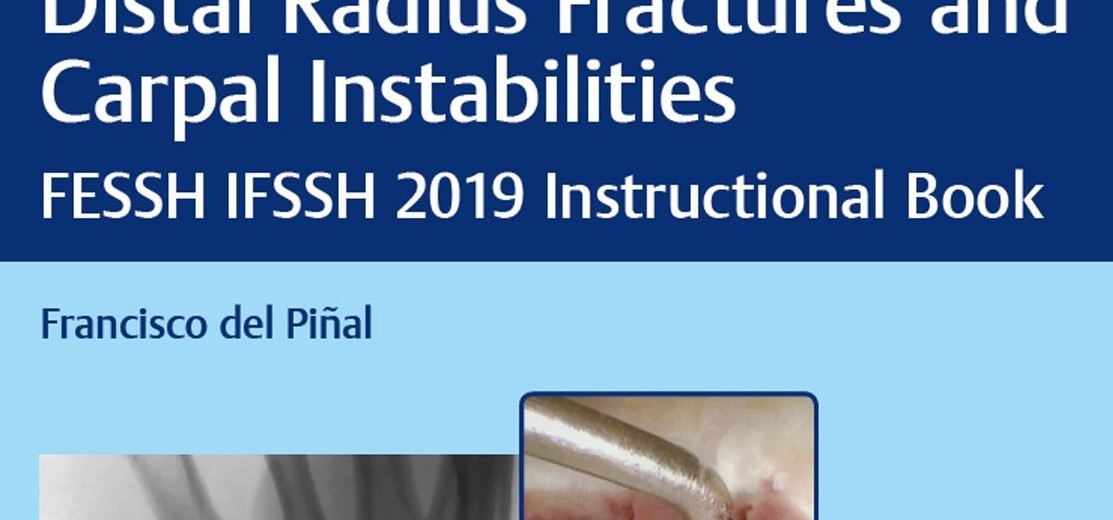Qui sotto puoi leggere una traduzione del traduttore umano in inglese. Hai anche accesso all’originale spagnolo cliccando sulla bandiera nell’angolo in alto a destra. Questo link ti consente di accedere a una versione di traduzione automatica di Google in italiano: http://bit.ly/2JMoF8k
‘Distal radius fractures and carpal instabilities’ includes an up-to-date selection of techniques available for the treatment of these injuries. radio distale
 Promoted by the International Federation of Societies for Surgery of the Hand (IFSSH) and the Federation of European Societies for Surgery of the Hand (FESSH), the book was presented as instructional material at the 14th triennial congress of the IFSSH, held in Berlin last June.
Promoted by the International Federation of Societies for Surgery of the Hand (IFSSH) and the Federation of European Societies for Surgery of the Hand (FESSH), the book was presented as instructional material at the 14th triennial congress of the IFSSH, held in Berlin last June.
In its 300 pages, with 634 illustrations, world-renowned surgeons review the subjects of greatest interest and impact in the management of distal radius fractures and ligamentous injuries in the wrist.
Dr. Piñal counts as co-editors with German surgeons Max Haerle, former general secretary of FESSH and Herman Krimmer, chief of the Hand Center of St. Elisabeth Hospital in Ravensburg.
As Piñal states in the foreword, the management of distal radius fractures and wrist ligamentous injuries has seen dramatic changes in recent decades. “Everything ranging from casts, external fixateurs, intramedular devices, volar or dorsal plates to arthroscopy have all contributed to making it possible to provide our patients with outstanding results”, he says. In his opinion, “no one method can be used for all injuries, as the personality of each fracture or ligamentous injury demands a different approach”.
The Spanish surgeon hopes that this new book will improve “the care of our patients and inspire the creativity of future generations of surgeons”.
 es
es en
en fr
fr it
it ru
ru zh-hans
zh-hans
